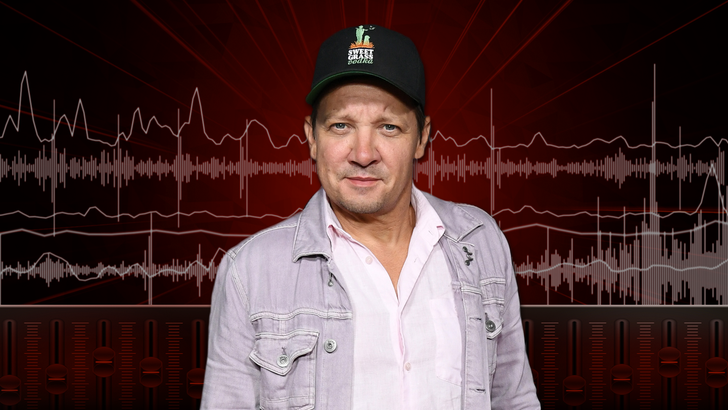
```In the complex and highly publicized legal proceedings surrounding Sean "Diddy" Combs, recent testimony from an unexpected witness has added another layer of intrigue. Sharay Hayes, an exotic male dancer known professionally as "The Punisher," took the stand, only to state under oath that he did not witness Diddy commit any actions that appeared to be criminal during his interactions with Diddy and Cassie Ventura.
Hayes's testimony, as reported by TMZ based on his subsequent interview on "TMZ Live," has left many, including Hayes himself, questioning the prosecution's strategy in calling him to the stand. His account appears, at face value, to offer little support for potential charges against Combs and, according to Hayes, may have inadvertently bolstered the defense's position.
Witness Account Raises Questions
According to Sharay Hayes's statements to TMZ, his interactions with Diddy and Cassie Ventura were primarily sexual in nature and took place exclusively in New York City hotels. Despite being called as a witness by federal prosecutors, Hayes maintains that throughout his experiences with the pair, he observed nothing that struck him as illegal, forced, violent, or coercive on Diddy's part.
This assertion stands in stark contrast to the gravity of the allegations that have been made against Combs in various civil lawsuits and the subject of federal scrutiny. The decision by prosecutors to call a witness whose stated observations seemingly contradict or fail to support their case is a point of significant legal and public discussion.
Hayes himself expressed confusion about the prosecution's motive for putting him on the stand. He claims to have informed prosecutors prior to his testimony that he had not witnessed any criminal activity. Given this prior disclosure, his eventual testimony, which he feels may have aided the defense, appears to have been a predictable outcome.
Details of the Interactions and Lack of Criminality
The interactions described by Hayes involved consensual sexual activity with both Diddy and Cassie. While he noted that Cassie winced occasionally during these encounters, he explicitly stated that he did not interpret these moments as evidence of force, violence, or coercion perpetrated by Diddy. His testimony reportedly focused on the specifics of these encounters, including the dynamic between the individuals involved.
Crucially, Hayes stated that all his meetings with Diddy and Cassie occurred within New York City. This geographical limitation is particularly noteworthy in the context of potential federal charges, such as those related to the Mann Act, which involves the interstate transportation of individuals for illegal sexual activity. If Hayes's encounters were confined solely to New York, his testimony would seemingly hold no direct relevance to charges involving the crossing of state lines.
This raises the question of what information prosecutors believed Hayes possessed that would be valuable to their case, even if he hadn't witnessed outright criminal acts as defined by specific statutes. Perhaps they sought to establish context regarding the nature of Diddy's relationships or activities, even if the details provided were not inherently illegal. However, without a clear connection to the alleged criminal conduct, such testimony can appear tangential or even detrimental to the prosecution's narrative.
The Book Factor and Public Perception
Adding another dimension to this unexpected testimony is the fact that Sharay Hayes is the author of a book detailing his 30-year career as an exotic dancer. The book, titled "In Search of Freezer Meat," reportedly includes passages that describe experiences matching his testimony concerning Diddy and Cassie, although they are not explicitly named in the text. The book also touches on sensitive topics such as erectile dysfunction and penis implants.
During his testimony, the existence of his book was mentioned. Following his court appearance and subsequent interview, "In Search of Freezer Meat" reportedly became a number one new release on Amazon. This rapid rise in popularity has led to suggestions that the timing of his testimony and the public exposure it generated could be seen as a form of publicity for his book.
Hayes, however, has pushed back against the idea that he is seeking clout from this situation. In his interview, he appeared poised and calm, a demeanor that he suggests may have been a factor in prosecutors viewing him as a credible witness, despite his profession and the sensitive nature of his potential testimony.
Nevertheless, the intersection of a high-profile trial, unexpected witness testimony, and a suddenly popular book about the witness's life and career is a complex interplay of legal proceedings and public relations. For the defense, highlighting the witness's profession and book could potentially be used to question his credibility or motives, though his calm demeanor and consistent account (that he saw no crimes) might mitigate such attacks.
Analyzing the Prosecution's Strategy
The decision to call Sharay Hayes as a witness remains perplexing based on his public statements about the content of his testimony. Legal experts often analyze witness selection based on how their testimony supports the elements of the charges being pursued. If Hayes did not witness criminal acts, his utility to the prosecution's case is not immediately apparent.
Several possibilities, though speculative without direct knowledge of the prosecution's internal strategy, could explain why they chose to call him:
1. **Contextual Information:** Prosecutors might have believed Hayes could provide contextual information about Diddy's lifestyle, relationships, or behaviors, even if those specific behaviors were not illegal in isolation. The hope might have been that these details, when combined with other evidence, could paint a picture relevant to the charges.
2. **Confirming Other Testimony:** Perhaps Hayes's testimony was intended to corroborate specific details mentioned by other witnesses, even if it didn't corroborate criminal acts. Confirming logistical details, locations, or the presence of certain individuals could be seen as building a factual foundation.
3. **Assessing Credibility:** Prosecutors might have wanted to assess Hayes's credibility under oath, possibly anticipating that the defense might call him or that his name might arise through other testimony. By calling him themselves, they could potentially preempt the defense or gain a better understanding of how he would present to a jury.
4. **Miscalculation:** It is also possible that the prosecution simply miscalculated what Hayes would say or how his testimony would land with a jury. Witnesses can be unpredictable, and their demeanor and specific phrasing in court can sometimes differ from pretrial interviews.
5. **Establishing a Pattern (Even of Non-Criminal Behavior):** In some cases, prosecutors may introduce testimony about a pattern of behavior, even if individual instances are not criminal, to support broader allegations. However, without a clear link to the alleged crimes, this approach carries risks.
Regardless of the strategic reasoning, Hayes's testimony, as reported, did not provide direct evidence of criminal wrongdoing by Diddy and appears to have introduced elements (like the book) that could be perceived as distractions or grounds for questioning the witness's motivations.
Implications for the Trial Narrative
High-profile trials often involve a complex interplay of evidence, testimony, and public perception. Unexpected witnesses, particularly those from unusual backgrounds like an exotic dancer, can capture significant media attention and influence public opinion, whether or not their testimony is legally dispositive.
Hayes's account, emphasizing the *lack* of observed criminal activity, adds a counterpoint to potentially damaging testimony from other witnesses who may be alleging abuse or misconduct. In a trial where the prosecution seeks to build a case based on various accounts and pieces of evidence, testimony that fails to support the narrative can create doubt or confusion among jurors.
The fact that Hayes's interactions occurred in New York also highlights a potential challenge for federal prosecutors pursuing charges that may rely on interstate activities. If key witnesses' experiences were confined to a single state, linking those experiences to federal jurisdiction becomes more complicated.
The Diddy legal situation involves multiple layers, including federal investigations and numerous civil lawsuits containing serious allegations. Each piece of testimony is scrutinized for how it fits into this larger, complex picture. Sharay "The Punisher" Hayes's appearance on the stand and his subsequent public statements have undoubtedly added a surprising and, for many, confusing element to the ongoing proceedings.
His direct assertion that he saw no criminal activity by Diddy, coupled with his own reported confusion about being called as a witness, underscores the complexities and sometimes unpredictable nature of legal battles involving prominent figures. As the proceedings continue, the relevance and impact of this particular testimony within the overall case against Sean Combs will become clearer, but for now, it remains a curious footnote in a highly watched legal drama.



